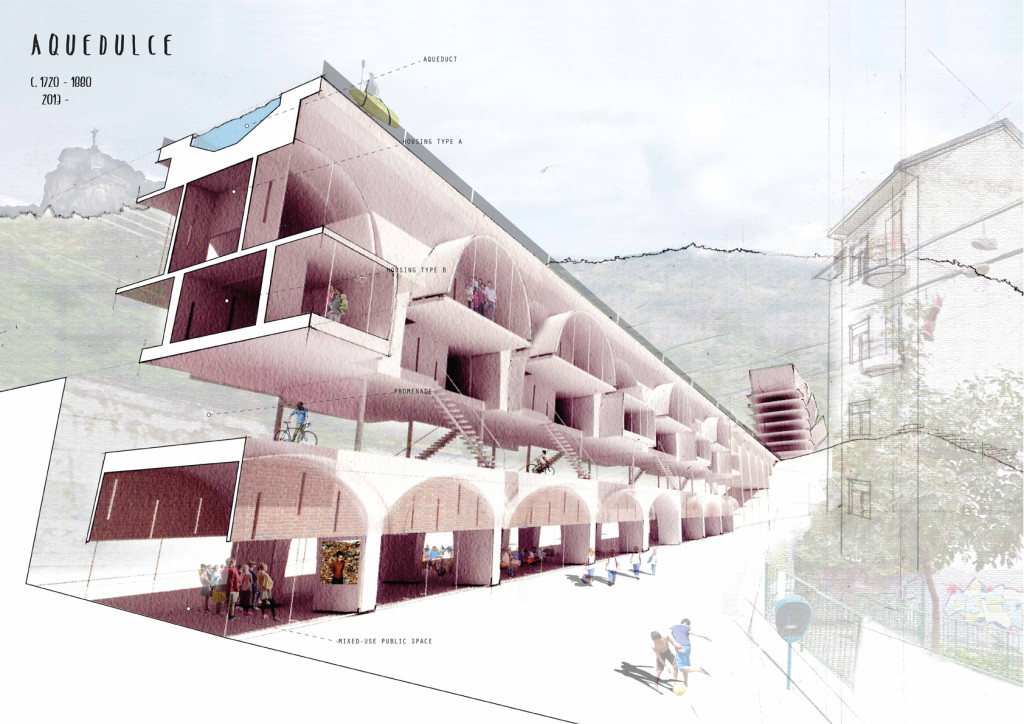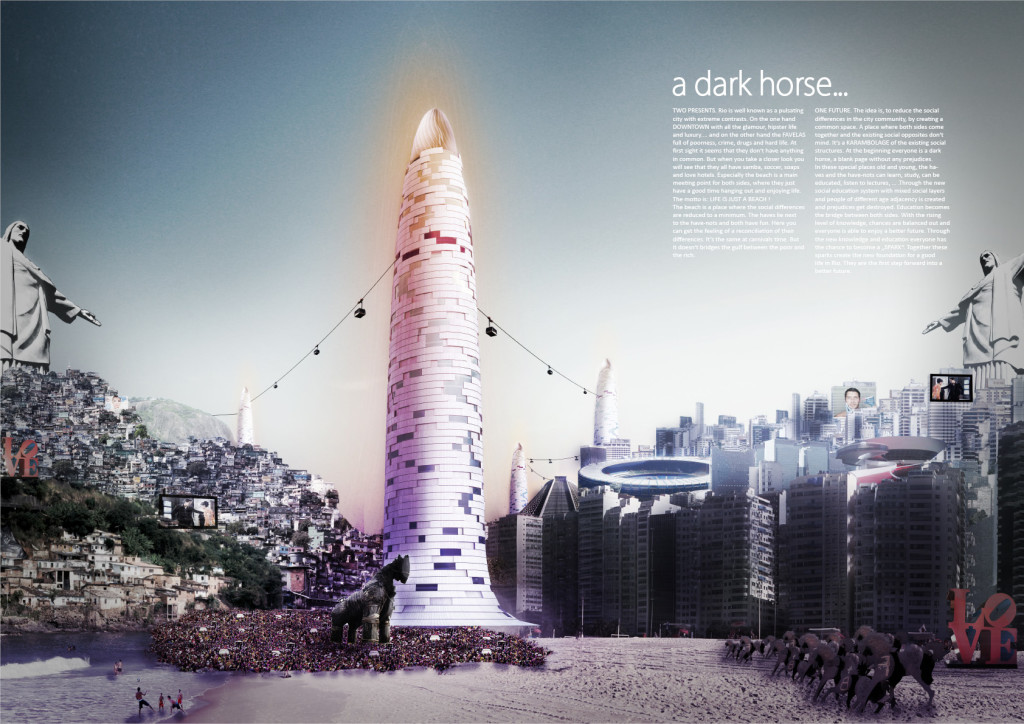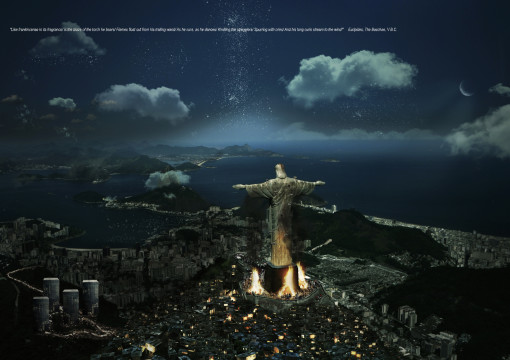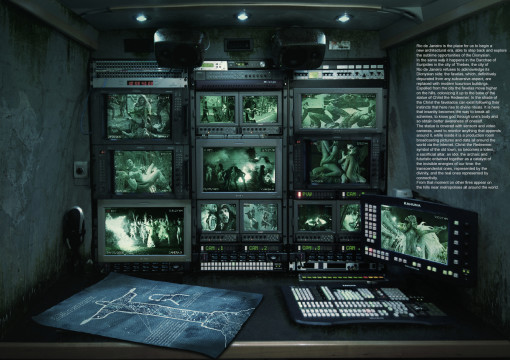Info:
Title: Mántica - Code: ef0f4Contest: Rio de Janeiro / 2013
By: Andrea Galli - Riccardo Berghella - Ottavio Berghella - Lorenzo Massimiano
Views: 9265 Likes: 8
Votes:
Alejandro Zaera-Polo 10 Jeffrey Inaba 9 Jeroen Koolhaas 8 Hernan Diaz Alonso 1 Cristiano Toraldo di Francia 8 Pedro Rivera 77.2
Mántica
“For this city must learn, though against its will, that it has yet to be initiated? into my Dionysian rites.” Euripides, The Bacchae, 406 BC. The metropolis of Rio de Janeiro hosts two tensions that cohabit and fight constantly: on one side the desire of rigour and opulence, on the other the violence and poverty of the favelas. Many architects from all over the world wonder how to settle this conflict, trying to purge the ‘sick’ part of the city where chaos and crime rules. This attitude has always belonged to architecture: since the first expressions, its efforts have been to obtain what Nietzsche calls the Apollonian, making the architect similar to a doctor or a priest who wants to root out the evil. Nevertheless, a hidden side exists in the human being, the Dionysian, that tries in every possible way to emerge and break free. In Rio de Janeiro this dichotomy is extremely pronounced and it can be recognized through its spatial expression. It is sufficient to look at the territory to identify areas where urban development has rejected any attempt of planning, following only rules subjected by the natural instinct. Rio de Janeiro is the place for us to begin a new architectural era, able to step back and explore the sublime opportunities of the Dionysian. In the same way it happens in the Bacchae of Euripides in the city of Thebes, the city of Rio de Janeiro refuses to acknowledge its Dionysian side: the favelas, which, definitively depurated from any subversive aspect, are replaced with modern luxurious buildings. Expelled from the city the favelas move higher on the hills, colonizing it up to the base of the statue of Christ the Redeemer. In the shade of the Christ the favelados can exist following their instincts that here rise to divine rituals. It is here that insanity becomes the way to break all schemes, to know god through one’s body and so obtain better awareness of oneself. The statue is covered with sensors and video cameras, used to monitor anything that appends around it, while inside it is a production room broadcasting pictures and data all around the world via the Internet. Christ the Redeemer, symbol of the old town, so becomes a totem, a sacrificial altar, an idol, the archaic and futuristic entwined together as a catalyst of the invisible energies of our time: the transcendental ones, represented by the divinity, and the real ones represented by connectivity. From that moment on other fires appear on the hills near metropolises all around the world.








